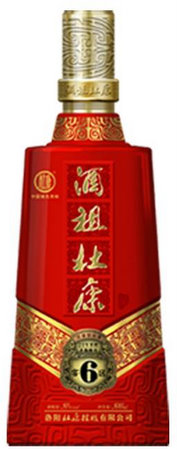 We reproduce below three questions that Securities Investors Association of Singapore (SIAS) has sent to Dukang Distillers. This is part of SIAS' initiative to ask three "carefully researched" questions for each company that it selects ahead of their AGMs.
We reproduce below three questions that Securities Investors Association of Singapore (SIAS) has sent to Dukang Distillers. This is part of SIAS' initiative to ask three "carefully researched" questions for each company that it selects ahead of their AGMs.
"The aim is to help improve the quality of engagement between management and shareholders at general meetings," according to a recent Business Times report.
In addition, SIAS hopes that the questions will help shareholders to focus on the important areas for discussion and give companies an opportunity to constructively engage with shareholders.
To provide the service, SIAS engages a team of analysts -- they are not regular analysts from broking houses -- to scrutinise the companies' annual reports. SIAS, which is a non-profit group, has estimated the cost of the programme at about S$1 million this year to cover 200 companies; the extent of coverage is expected to expand over the next few years, reports Business Times. The questions sent by SIAS to various companies to date can be found on its webpage.
1. In the Chairman’s Statement (page 6 of the annual report), the Chairman acknowledged that “Dukang”, being a second-tier baijiu brand, faced challenges from first-tier baijiu brands. As a result of the austerity measures implemented by the Chinese government, second-tier brands cannot compete with the first-tier baijiu brands as they lack the brand value recognition. These first-tier brands have carried out aggressive price rationalisation. Even though the group had carried out aggressive advertising and promotional (“A&P”) activities and participated pro-actively in national level trade fair during the financial year, the group witnessed a further decline in sales volume across the premium and regular segments. With selling and distribution expenses increasing by 35.4% year-on-year to RMB216.7 million mainly due to higher A&P expenses, the sales volume still dropped 11.3%. The group has listed the following measures: - Increase the fermentation period from 60 days to 90 days to improve quality - Reposition “Dukang” brand in a more contemporary and trendy approach - Streamline the distributorships by replacing non-performing distributors - Reduce sales channel length and increase service efficiency - Streamlined organisational structure to improve its operational efficiency and internal cost controls  a) If the measures work, Dukang will still be at best the top tier-two baijiu brand that would capture the residual demand that cannot be met by the tier-one brands. Is this the best feasible strategy for the group? Are there ways to think outside the box and to create a new niche for Dukang? a) If the measures work, Dukang will still be at best the top tier-two baijiu brand that would capture the residual demand that cannot be met by the tier-one brands. Is this the best feasible strategy for the group? Are there ways to think outside the box and to create a new niche for Dukang? b) There were no sales contribution by “Siwu” and no mention of it was made in the current annual report or the last annual report. Can management update shareholders if this has been a strategic move to focus the group’s resources on just the “Dukang” brand? If Siwu is no longer in the group’s strategic plans, could the brand be sold or repositioned? What is the financial impact of the discontinuation of Siwu on the financial position? c) As early as the two years ago (in the FY2014 annual report), the Chairman started reporting the new austerity measures by the Chinese government affecting conspicuous consumption of luxury gifts. a. Excerpt from Dukang Distillers Holdings Limited Annual Report 2014 (page 5): b. The financial year ended 30 June 2014 (”FY2014”) is one of the toughest periods in the Group’s years of growth and development. The austerity measures of the Chinese government, the uncertainties in the macroeconomy, the shift in market consumption of baijiu and the stiff competition among the baijiu giants have impinged on the growth of the baijiu sector. The austerity and anti-corruption drive only intensified since then. Revenue of Dukang has since fallen by the start of the austerity drive. Unfortunately, due to the urbanisation re-zoning plans of the local authorities in Yichuan, the Group is required to relocate its factory and operations. When the plans were announced in February 2015, the proposed new site has a land size of 1,038 mu (310 mu in the first phase) when the existing site is only 173 mu. The production capacity of phase 1 would be 3,500 tonnes when the existing site could only produce 2,000 tonnes a year. Given the drastic drop in demand and the challenging conditions, what are the group’s plans with regard to the new Yichuan factory? Can the group review the operational needs and reduce the size of the new land? Can the group update on the development timeline for phase 1 now that it has been delayed? 2. The group has net assets of RMB 1.4 billion (page 35). Inventories (consisting of raw materials, work in progress and finished goods) account for RMB 644 million or 45% of the group’s net assets. According to the note 4.8 (page 45 – Inventories): Inventories are carried at the lower of cost and net realisable value. Cost is determined using the weighted average basis, and in the case of work in progress and finished goods, comprise direct materials, direct labour and an appropriate proportion of overheads. Net realisable value is the estimated selling price in the ordinary course of business less the estimated cost of completion and applicable selling expenses. Can the board, in particular, the audit committee help shareholders understand if the inventories are carried at cost or net realisable value? Has there been any impairment as the average selling price has been severely depressed? What is the audit committee’s role in assessing the quantity and value of the inventories? Can the external auditors explain what their roles are in assessing the quantity and value of the inventories? 3. In the operations review (page 9), it was disclosed that “cash and cash equivalents increased by RMB 192.6 million from RMB 403.0 million for FY2015 to RMB 595.6 million for FY2016”. Note 9 (page 55 – Finance costs) shows that the group has had RMB 8.89 million in “interest on bank and other loans”. Note 23 (page 66 – Bank and other loans, secured) shows that the group has “Other loan” amounting to RMB 15 million with an effective interest rate of 8.78% per annum and “Bank loans” of RMB 120 million with an effective interest rate of 5.98% per annum. Would the board help shareholders understand why the group has not utilised its cash but relied on bank and other loans and incurred finance costs of nearly RMB 9 million for the financial year? With a more stable outlook for baijiu, and with a sizeable cash hoard, would the board consider rewarding shareholders with a dividend? Would the independent directors comment if they think the group has the ability to give out dividends and manage its cash flow requirements (including the relocation and working capital needs) since the cash and cash equivalent increased to a substantial level of RMB 596 million? |
On 1 Nov 2016, Dukang Distillers issued a reply to the above questions. Click here.
Previous story: DUKANG DISTILLERS: Cheap, cheap, any private equity firm interested?







